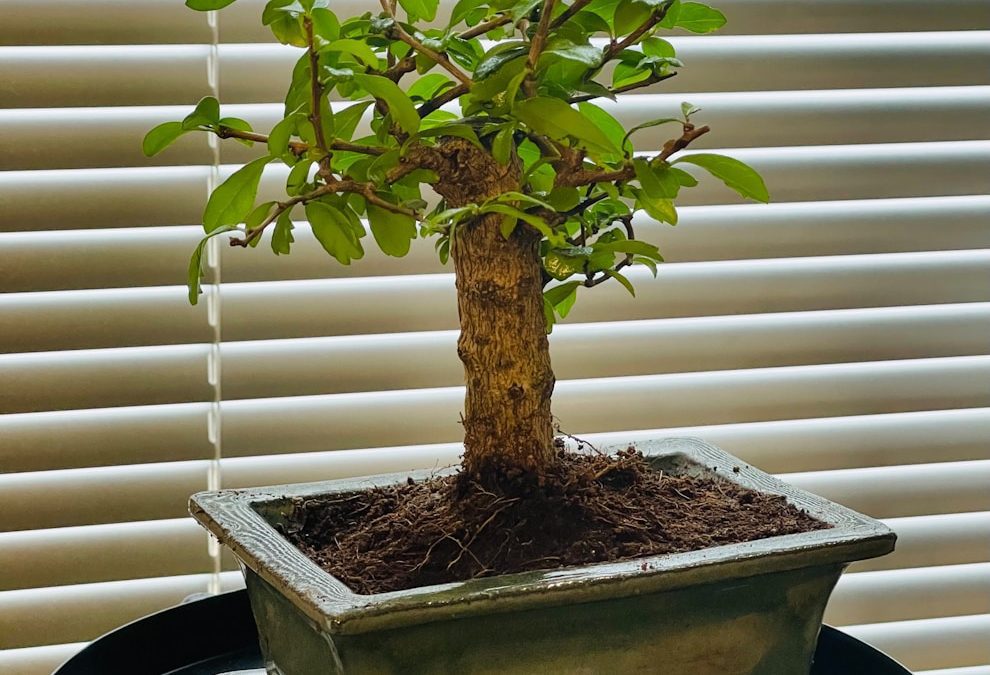Contents
- 1 Bonsai Tree Care Guide: Simple Steps for Healthy, Thriving Bonsai
- 1.1 Introduction
- 1.2 What is a Bonsai Tree?
- 1.3 Choosing the Right Bonsai Species
- 1.4 Optimal Lighting Conditions
- 1.5 How to Water Your Bonsai Tree
- 1.6 Best Soil and Fertilizer for Bonsai
- 1.7 Essential Pruning Techniques
- 1.8 Wiring and Shaping Your Bonsai
- 1.9 Repotting Your Bonsai
- 1.10 Common Bonsai Problems and Solutions
- 1.11 Benefits of Growing Bonsai Indoors
- 1.12 Essential Products for Bonsai Care
- 1.13 Frequently Asked Questions (FAQs)
- 1.14 Conclusion and Next Steps
Bonsai Tree Care Guide: Simple Steps for Healthy, Thriving Bonsai
Introduction
Proper bonsai tree care transforms these miniature trees into stunning pieces of living art. While bonsai trees might appear delicate, with the right guidance, anyone can successfully maintain them. This comprehensive guide covers simple yet effective steps to help your bonsai thrive indoors.
What is a Bonsai Tree?
Bonsai trees are miniature, cultivated trees carefully shaped and maintained to reflect their full-sized counterparts in nature. Originating in China and perfected in Japan, bonsai symbolizes harmony, balance, and peace (source: Bonsai Wikipedia).
Choosing the Right Bonsai Species
Selecting a suitable bonsai species depends on your home’s environment and your commitment level:
- Ficus: Hardy and forgiving, great for beginners.
- Juniper: Classic appearance, prefers outdoors but adaptable indoors.
- Chinese Elm: Tolerates indoor environments well.
Optimal Lighting Conditions
Bonsai trees typically require plenty of indirect sunlight:
- Position near east or west-facing windows for optimal indirect sunlight.
- Avoid prolonged direct sun exposure to prevent leaf scorch.
- Supplement with grow lights if natural light is limited.
How to Water Your Bonsai Tree
Proper watering is essential:
- Water when the topsoil feels slightly dry.
- Use room temperature water and water thoroughly until excess drains away.
- Avoid waterlogging to prevent root rot.
Best Soil and Fertilizer for Bonsai
Quality soil and nutrients foster robust bonsai growth:
- Soil: Use specialized bonsai soil mixes, promoting excellent drainage.
- Fertilizer: Apply balanced bonsai fertilizer bi-weekly during the growing season (spring and summer).
Essential Pruning Techniques
Regular pruning maintains shape and promotes health:
- Trim branches strategically to maintain bonsai aesthetics.
- Remove dead or unhealthy foliage promptly.
- Prune roots carefully during repotting to stimulate healthy growth.
Wiring and Shaping Your Bonsai
Wiring allows creative control over your bonsai’s shape:
- Use aluminum or copper wire gently wrapped around branches.
- Remove wiring after branches maintain their shape to avoid damage.
Repotting Your Bonsai
Periodic repotting revitalizes your bonsai:
- Repot every 1–3 years depending on species and growth rate.
- Refresh soil and prune roots slightly during repotting.
Common Bonsai Problems and Solutions
Leaf Drop
- Cause: Overwatering, under-watering, or sudden environmental changes.
- Solution: Adjust watering frequency and stabilize environmental conditions.
Yellowing Leaves
- Cause: Nutrient deficiency or poor drainage.
- Solution: Improve soil drainage and fertilize regularly.
Pest Infestation
- Cause: Common pests like aphids, spider mites, or scale.
- Solution: Apply appropriate insecticidal soap or neem oil treatments.
Benefits of Growing Bonsai Indoors
- Enhances mental clarity and reduces stress.
- Improves air quality indoors.
- Cultivates patience and mindfulness through ongoing care.
Essential Products for Bonsai Care
Enhance your bonsai care with specialized products:
This comprehensive kit provides essential tools for pruning, wiring, and maintaining your bonsai tree.
Frequently Asked Questions (FAQs)
Q: How often should I prune my bonsai tree?
A: Regular pruning every few weeks during the growing season is ideal.
Q: Can bonsai trees survive indoors?
A: Yes, many species like Ficus and Chinese Elm thrive indoors with proper care.
Q: Why is my bonsai losing leaves?
A: Leaf loss can result from watering issues or abrupt environmental changes. Stabilize conditions and monitor closely.
Conclusion and Next Steps
With patience and proper care, your bonsai tree will flourish, bringing beauty and tranquility to your home. Ready for more indoor gardening insights? Explore additional plant care guides and tips to elevate your gardening skills today!

